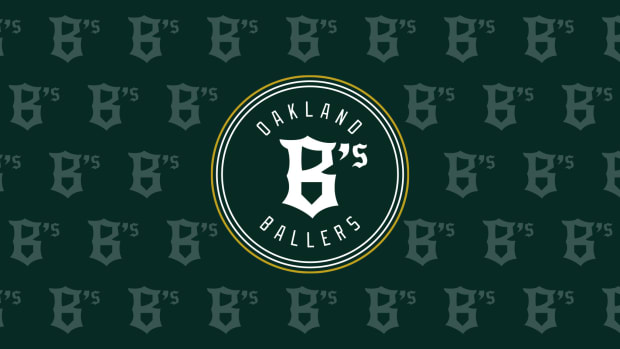National League Central: Two Or Three Teams Tied For One Spot
This seems like it should be fairly simple, but just like in the AL East, because the wild-card could come into play as well it gets more complicated. Let's start with the easy stuff. Three teams remain in contention for the NL Central title: the Chicago Cubs, the St. Louis Cardinals and the Milwaukee Brewers. We'll assume the designations are as follows:
Team A: Cubs
Team B: Brewers
Team C: Cardinals
Here's how things would shake out given the 11 different possibilities:
1. Two-Team Tie (no wild-card): Cubs and Brewers
Milwaukee leads the head-to-head matchup here, 8-7, but the teams still have to play four more times, at Miller Park from Sept. 21-24. Whoever wins the season series would get home field advantage in a tiebreaker game on Oct. 2.
2. Two-Team Tie (no wild-card): Cubs and Cardinals
Chicago has an 8-4 edge here but still has to play St. Louis seven more times, starting this weekend at Wrigley Field.
3. Three-Team Tie (no wild-card):
Game 1: Team B (Brewers) at Team A (Cubs); loser eliminated
Game 2: Team C (Cardinals) at Game 1 winner; winner gets division title
4. Two-Team Tie For Division And Wild-Card:
Tiebreaker game determines division champion. Loser becomes the wild-card.
5. Two-Team Tie For Division And Tied With Non-NL Central Team For Wild-Card:
Tiebreaker game is held for division title; loser plays at the non-NL Central team the next day to determine the wild-card
6. Two-Team Tie For Division And Tied With Two Non-NL Central Teams For One Wild-Card:
Let's assume the Cubs and Brewers tie for first place in the NL Central and finish with the same record as the Diamondbacks and the Rockies for the wild-card. Arizona has won the season series with Colorado and would be the home team in a Game 163. The breakdown would be as follows:
Game 1, Oct. 2: Cubs vs. Brewers; winner gets division title and loser moves to wild-card bracket
Game 2, Oct. 2: Rockies at Diamondbacks; loser is eliminated
Game 3, Oct. 3: Loser of Cubs-Brewers at Winner of Rockies-Diamondbacks; winner gets wild-card spot
7. Two-Team Tie For Division And Tied With Two Non-NL Central Teams For Two Wild Cards:
Game 1, Oct. 2: Cubs vs. Brewers; winner gets division title and loser moves to wild-card bracket
Game 2, Oct. 2: Rockies at Diamondbacks: winner gets first wild-card; loser moves to wild-card bracket
Game 3, Oct. 3: Loser of Cubs-Brewers vs. Loser of Rockies-Diamondbacks. Normal rules determine who would have home field advantage.
8. Three-Team Tie For Division And One Wild-Card:
Game 1, Oct. 2: Team B (Brewers) at Team A (Cubs); loser is eliminated
Game 2, Oct. 3: Team C (Cardinals) at Game 1 winner; winner gets division title, loser is the wild-card
9. Three-Team Tie For Division And Two Wild-Cards
Game 1, Oct. 2: Team B (Brewers) at Team A (Cubs); loser gets wild-card spot
Game 2, Oct. 3: Team C (Cardinals) at Game 1 winner; winner gets division title, loser gets wild-card spot
10. Three-Team Tie For Division And Tied With One Non-NL Central Team For One Wild-Card Spot:
Game 1, Oct. 2: Team B (Brewers) at Team A (Cubs);
Game 2, Oct. 2: Team D (Non-NL Central team) at Team C (Cardinals)
If Team D (we'll call them the Rockies) wins, that team gets the wild-card spot and Game 1 becomes a game for the division title. Why? Imagine that all four teams are 90-72 entering the tiebreaker games. Because tiebreaker games are technically regular season games, that means that the winners of these two games would finish the complete regular season at 91-72 while the losers would be 90-73. In this scenario two of the losers would be NL Central teams, so it's easy to see why the last NL Central team standing would be the division champion and the non-NL Central team would get the wild-card.
But what if Team C wins?
In that case, the tiebreaks would continue:
Game 3, Oct. 3: Team C at Game 1 winner; winner gets division title, loser gets wild-card
11. Three-Team Tie For Division And Tied With One Non-NL Central Team For Two Wild-Card Spots:
Game 1, Oct. 2: Team B (Brewers) at Team A (Cubs)
Game 2, Oct. 2: Team D (Non-NL Central team) at Team C (Cardinals)
If Team D wins, it gets one wild-card berth. Then the winner of Game 1 would be the division champion and there would be another game to settle the last wild-card spot:
Game 3, Oct. 3: Team C at Game 1 Loser; winner gets second wild-card spot
But what if Team C beats Team D? In that case, we'd have the following:
Game 3, Oct. 3: Team C at Game 1 Winner (A or B); winner gets division title and loser gets one wild-card
Game 4, Oct. 3: Team D at Game 1 Loser; winner gets second wild-card, loser is eliminated



































